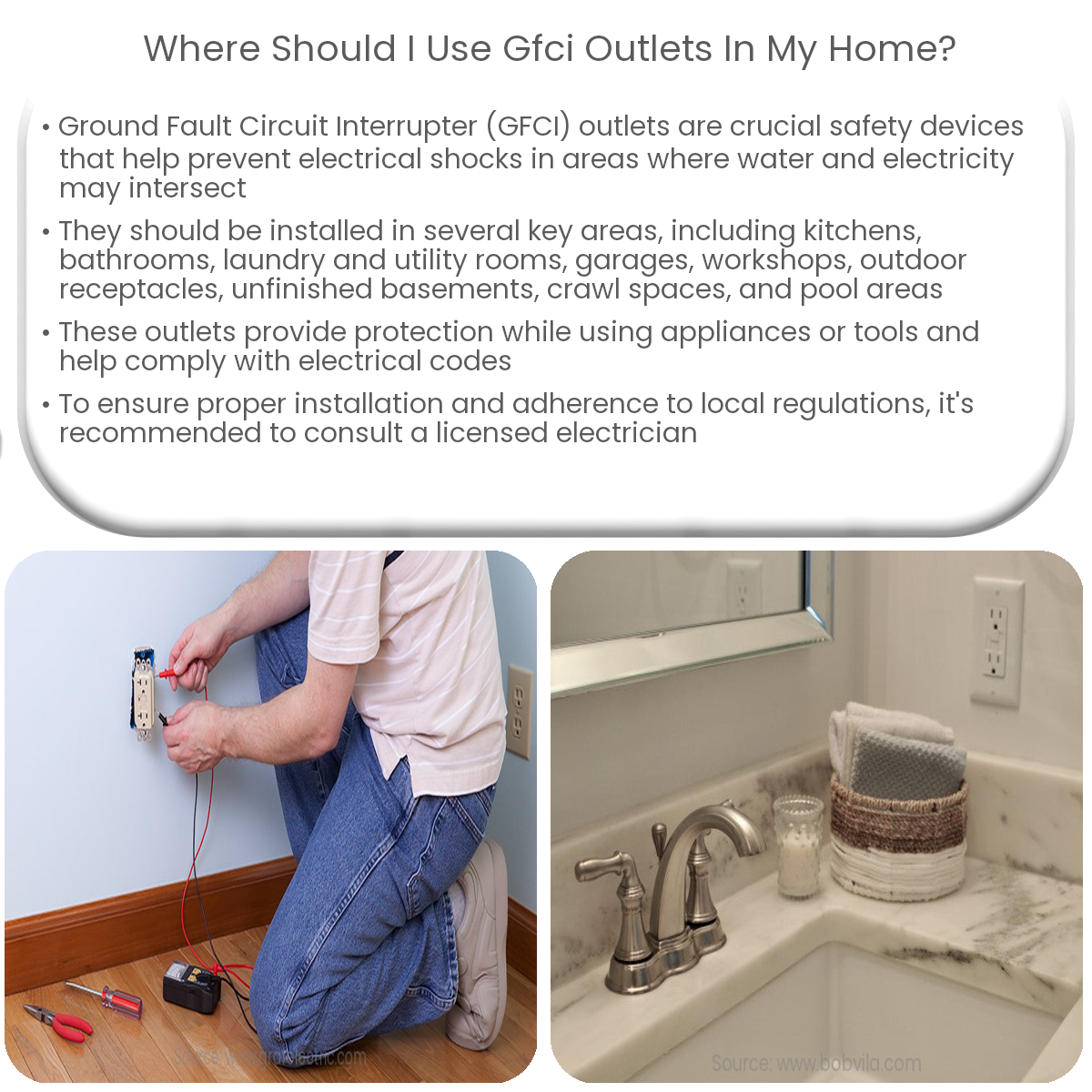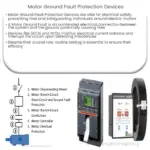Install GFCI outlets in kitchens, bathrooms, laundry rooms, garages, outdoor areas, unfinished basements, and wet bars to minimize electrical shock risk.
Where to Install GFCI Outlets in Your Home
Ground Fault Circuit Interrupter (GFCI) outlets are essential safety devices designed to prevent electrical shock in areas where water and electricity may come into contact. In this article, we will discuss the recommended locations for installing GFCI outlets in your home to ensure maximum safety and compliance with electrical codes.
1. Kitchens
As the kitchen is an area where water and electricity are often in close proximity, GFCI outlets should be installed for all countertop receptacles, including those serving kitchen islands and peninsulas. This provides protection while using appliances such as toasters, blenders, and coffee makers.
2. Bathrooms
Water is frequently present in bathrooms, making GFCI protection crucial for all outlets in this area. This includes outlets near sinks, bathtubs, and showers, where hairdryers, electric shavers, and other appliances may be used.
3. Laundry Rooms and Utility Rooms
Laundry rooms and utility rooms often have washing machines, dryers, and other appliances that use water. GFCI outlets should be installed for all receptacles in these areas to minimize the risk of electrical shock.
4. Garages and Workshops
Garages and workshops may contain power tools, battery chargers, and other equipment that can pose a risk if exposed to water or damp conditions. All outlets in these areas should be protected by GFCI devices.
5. Outdoor Receptacles
Outdoor receptacles are exposed to the elements and may come into contact with water from rain, sprinklers, or hoses. All exterior outlets should be GFCI-protected to ensure safety while using outdoor electrical equipment.
6. Unfinished Basements and Crawl Spaces
Unfinished basements and crawl spaces are often damp and may be prone to water infiltration. All receptacles in these areas should be equipped with GFCI outlets to reduce the risk of electrical shock.
7. Wet Bars and Pool Areas
Wet bars and pool areas are locations where water and electricity are likely to come into contact. Installing GFCI outlets in these areas is essential to protect against electrical shock while using appliances and equipment.
Conclusion
Installing GFCI outlets in areas where water and electricity may come into contact is essential for maintaining a safe environment in your home. By following these recommendations, you can minimize the risk of electrical shock and ensure compliance with electrical codes. It is always a good idea to consult with a licensed electrician when installing or replacing outlets to ensure proper installation and adherence to local regulations.


.png)

-in-electric-circuit-protection.png)
